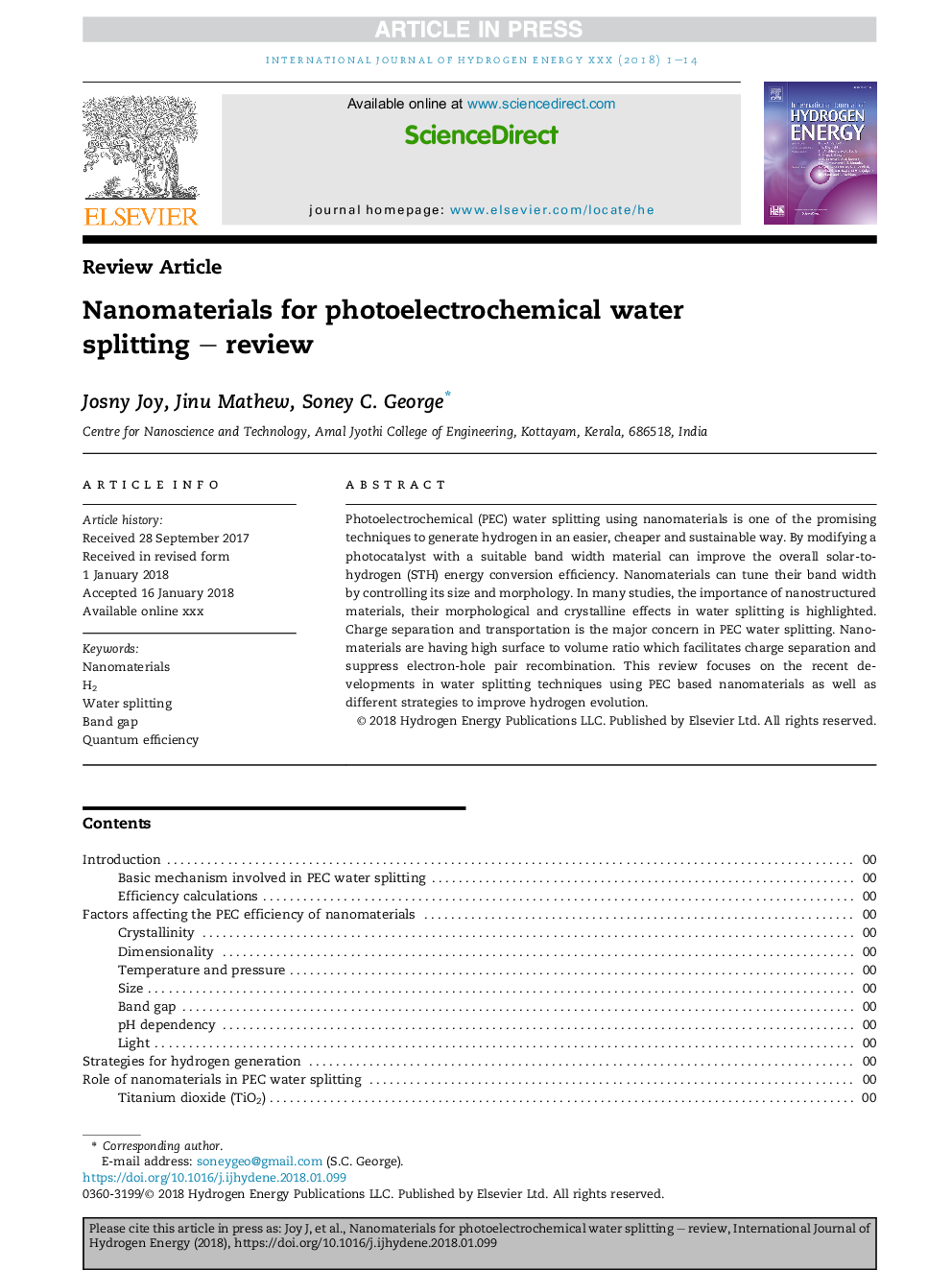| Article ID | Journal | Published Year | Pages | File Type |
|---|---|---|---|---|
| 7707195 | International Journal of Hydrogen Energy | 2018 | 14 Pages |
Abstract
Photoelectrochemical (PEC) water splitting using nanomaterials is one of the promising techniques to generate hydrogen in an easier, cheaper and sustainable way. By modifying a photocatalyst with a suitable band width material can improve the overall solar-to-hydrogen (STH) energy conversion efficiency. Nanomaterials can tune their band width by controlling its size and morphology. In many studies, the importance of nanostructured materials, their morphological and crystalline effects in water splitting is highlighted. Charge separation and transportation is the major concern in PEC water splitting. Nanomaterials are having high surface to volume ratio which facilitates charge separation and suppress electron-hole pair recombination. This review focuses on the recent developments in water splitting techniques using PEC based nanomaterials as well as different strategies to improve hydrogen evolution.
Related Topics
Physical Sciences and Engineering
Chemistry
Electrochemistry
Authors
Josny Joy, Jinu Mathew, Soney C. George,
